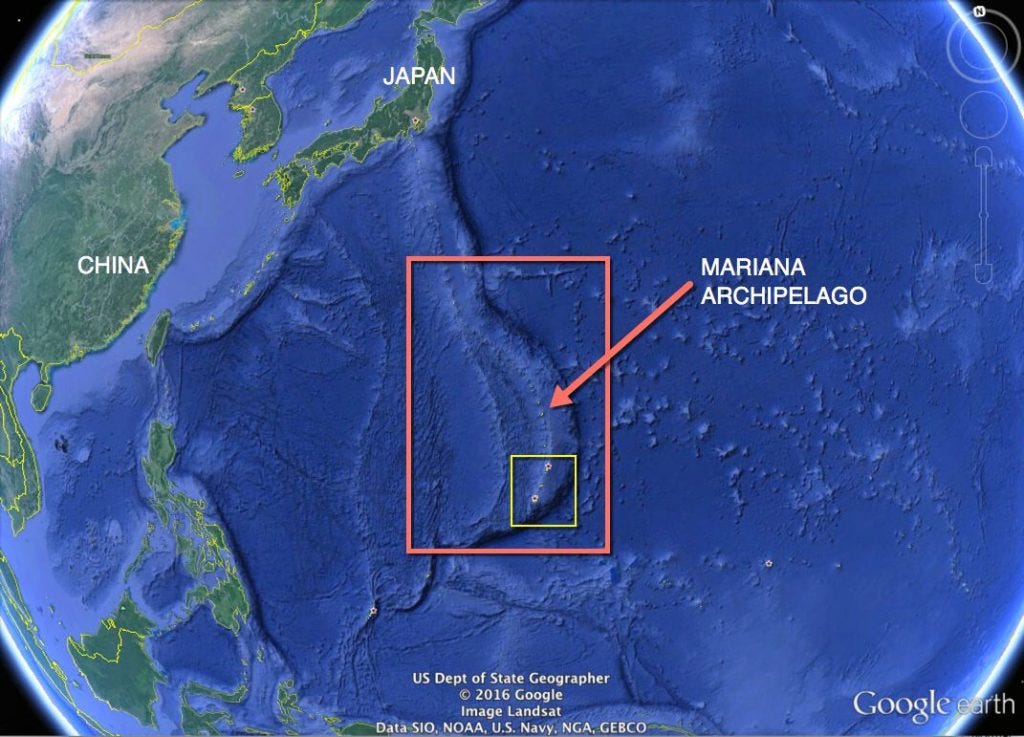
Unveiling the Secrets of the Mariana Trench: Earth's Deepest Mystery
The Mariana Trench is one of the most enigmatic and awe-inspiring natural wonders on Earth. Located in the western Pacific Ocean, this crescent-shaped scar in the Earth’s the Secrets of the Mariana Trench crust plunges down to nearly 36,000 feet (10,972 meters)—deeper than Mount Everest is tall. Despite being Earth’s deepest oceanic trench, much of it remains unexplored, hiding ancient ecosystems, extreme pressure zones, and perhaps even new life forms. In this article, we’ll dive deep into the mysteries, discoveries, and scientific significance of the Mariana Trench, often called Earth’s final frontier.
What Is the Mariana Trench?
The Mariana Trench is a massive underwater canyon in the western Pacific Ocean, east of the Mariana Islands. The trench stretches over 1,500 miles (2,550 kilometers) long and 45 miles (72 kilometers) wide. The deepest part, known as Challenger Deep, is the lowest known point in Earth’s seabed.
Location keywords: Mariana Trench location, Challenger Deep, Pacific Ocean trench
The Secrets of the Mariana Trench
The Mariana Trench is the deepest part of the world’s oceans, plunging over 36,000 feet below sea level.
Hidden in its dark depths are mysterious creatures that thrive under extreme pressure and total darkness.
Scientists believe the trench holds clues to Earth’s early life and even potential new species.
Due to its inaccessibility, much of the trench remains unexplored and shrouded in mystery.
The secrets of the Mariana Trench continue to captivate researchers and adventurers alike.
How Deep Is the Mariana Trench?
At its deepest point, Challenger Deep reaches an estimated depth of 10,972 meters (36,070 feet). To put it into perspective:
- If Mount Everest were dropped into the trench, its peak would still be over 1.2 miles underwater.
- The pressure at the bottom is over 1,000 times the atmospheric pressure at sea level—enough to crush most human-made submarines.
Related keywords: Mariana Trench depth, ocean pressure, Challenger Deep pressure
History of Mariana Trench Exploration
Despite its extreme depth and dangers, several missions have dared to explore the trench.
1. Trieste (1960)
The U.S. Navy’s bathyscaphe Trieste, piloted by Jacques Piccard and Don Walsh, was the first manned vessel to reach Challenger Deep.
2. James Cameron’s Dive (2012)
Film director and ocean explorer James Cameron made a historic solo descent in the Deepsea Challenger, spending hours filming and collecting samples.
3. Modern Deep-Sea ROVs and Missions
Today, remote-operated vehicles (ROVs) and autonomous submersibles like Victor Vescovo’s Limiting Factor have explored and mapped more parts of the trench.
Related keywords: Mariana Trench exploration history, James Cameron dive, deep sea missions
What Lives in the Mariana Trench?
Despite the darkness, cold, and crushing pressure, life thrives in the Mariana Trench. The Secrets of the Mariana Trench
1. Amphipods
These shrimp-like creatures have adapted to survive in toxic and high-pressure environments.
2. Xenophyophores
Single-celled organisms that build complex, house-like structures, found only in the deepest parts of the ocean.
3. Mysterious Jellyfish and Ghostfish
Recent footage has captured glowing bioluminescent creatures, some never seen before by scientists.
Related keywords: Mariana Trench creatures, deep sea animals, bioluminescence, deep ocean life
The Role of the Mariana Trench in Earth’s Ecosystem

The Mariana Trench plays a crucial role in regulating global climate and marine biodiversity.
- Carbon Sink: It traps and stores carbon-rich material, helping reduce atmospheric CO₂.
- Subduction Zone: The trench lies at a tectonic plate boundary, where oceanic crust sinks back into the mantle—affecting global geology and seismic activity. The Secrets of the Mariana Trench.
Related keywords: carbon cycle, subduction zone, oceanic plates, marine biodiversity
Is There Human Impact on the Trench?
Unfortunately, even the Earth’s deepest places are not immune to pollution.
- In 2018, scientists discovered plastic waste—including a plastic bag—at the bottom of the trench.
- Traces of industrial toxins like PCBs (polychlorinated biphenyls) have been found in trench organisms.
This reveals a sobering truth: human activity affects even the most remote ecosystems.
Related keywords: ocean pollution, Mariana Trench plastic, deep-sea toxins, human impact on oceans
Unanswered Questions and Future Research
The Mariana Trench remains largely unexplored. Key questions include:
- Are there undiscovered life forms?
- Could the trench hold answers to the origin of life on Earth?
- How do deep-sea organisms survive extreme conditions?
Future exploration missions by NASA, NOAA, and international marine researchers aim to unlock more secrets of the trench.
Related keywords: origin of life, ocean exploration 2025, NOAA deep sea, Mariana Trench mysteries
Fun Facts About the Mariana Trench
- The trench is named after the nearby Mariana Islands.
- Temperatures near the bottom hover just above freezing.
- The pressure is equivalent to 50 jumbo jets pressing down on your body.
Related keywords: Mariana Trench facts, ocean trivia, deep sea wonders
Conclusion
The Mariana Trench is a realm of extremes—dark, deep, and full of wonders yet to be understood. As technology advances, our ability to explore and protect this deep-sea marvel improves. Whether you’re fascinated by alien-like creatures, intrigued by deep-sea geology, or passionate about ocean conservation, the trench offers a captivating glimpse into Earth’s final frontier.
Read more https://lightslategray.com/trip-to-kedarnath-completee-guide/




